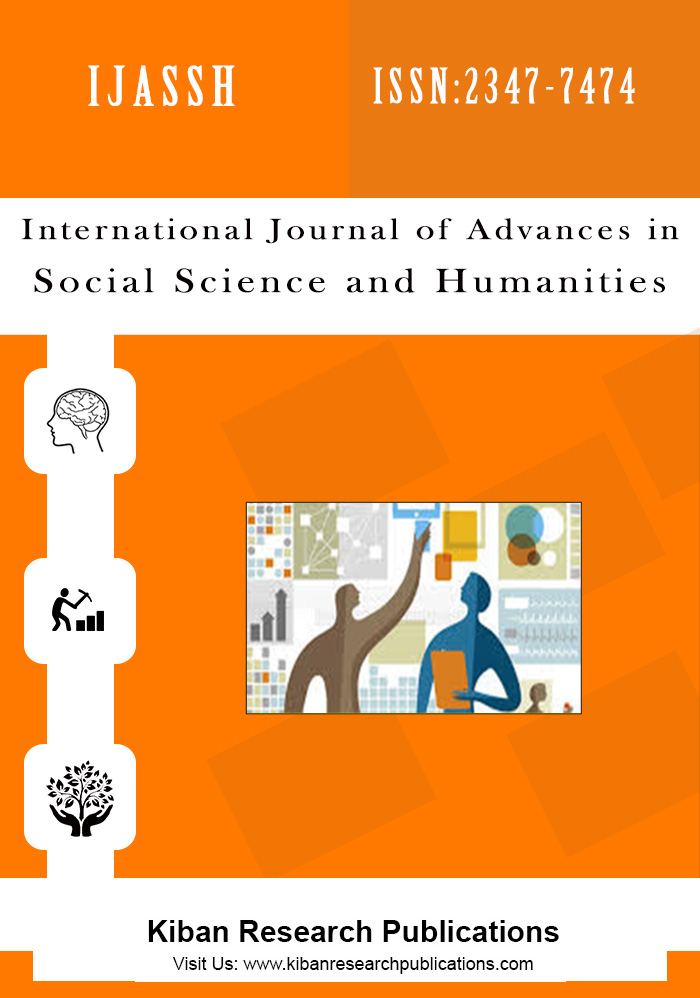The Human Resource Empowerment Model for Village Credit Institutions (LPD) in Badung Regency Bali Province
Abstract
The Village Credit Insitutions (LPD) in Badung Regency, Bali Province have experienced a rapid growth. In facing the ever-changing environment, the LPDs must be supported with competent human reousrces, in order to be more professional and ready to compete. The aim of this research is to indentify the opportunities and challenges, strengths and weaknesses of the LPD, and to design a human resource empowerment model for the LPDs. The analysis technique utilized in this research is the descriptive analysis. In formulating the HR empowerment model, the concepts of strategic management is used, namely by analyzing the LPD’s strategic position using the Internal External Matrix (IE Matrix). The research results show that the LPD’s strategic position in the IE Matrix is in cell I, which explains that the LPD has a high opportunity and strong competitiveness. A suitable strategy for entities in this position to grow and develop is by conducting the intensive strategy through market penetration, market development, and product development. The human resource empowerment model which encompasses the managers, supervisors, and employees recommended for LPDs in order to successfully implement their strategy is the individual capacity development empowerment model, through training programs to increase the individual characteristic qualities to be more effective and efficient in performing their tasks. The individual capacity development comprises the personality capacity, work capacity and professional capacity development.
References
Cheung, Catherine, Tom Baum, Alan Wong, 2012. Relocating empowerment as a management concept for Asia. Journal of Business Research, vol. 65, pp. 36–41
David, Fred R. and Forest R David. 2016. Strategic Management: A Competitive Adavanded Approach, Concepts and Cases, 15th Ed.
Novita Puspasar and Liza Nurbani Puspitasari (Penerjemah). Manajemen Strategik: Suatu Pendekatan Keunggulan Bersaing. Jakarta, Salemba Empat.
Ghosh, Ajit Kumar. 2013. Employee Empowerment: A Strategic Tool to obtain Sustainable Competitive Advantage. International Journal of Management Vol. 30 No. 3 Part, pp. 95-107.
Lawson, Karen. 2006. Four Keys to Employee Empowerment. Lawson Consulting Group, Inc. http://www.GrowingGreatness.com.
Luthans, Fred. 2006. Organizational Behavior. 10th Edition. Vivin
Andhika Yuwono, Shekar Purwanti, Th. Arie P and Winong Rosari (Penerjemah). Perilaku Organisasi. Yogyakarta. Penerbit Andi.
Mardikanto, Totok & Poerwoko Soebianto. 2015. Pemberdayaan Masyarakat dalam Perspektif Kebijakan Publik. Bandung, Penerbit Alfabeta.
Noe, Raymond A., John R. Hollenbeck, Barry Gerhart & Patrick M. Wright. 2010. Human Resource Management, Gaining a Competitive Advantage, 6th Ed. David Wijaya (Penerjemah). Manajemen Sumber Daya Manusia: Mencapai keunggulan Bersaing. Jakarta: Penerbit Salemba Empat.
Nugraha, Vertasius Sanjaya. 2013. Pemberdayaan Usaha Kecil Menengah/Usaha Rumah Tangga Kerajinan Kulit Di Kabupaten Bantul Yogya. Jurnal Maksipreneur, Vol. III, No. 1, hal 91-105.
Profil LPD Kabupaten Badung 2017.
Rahim, Manat, Madjiani Tahir, Waly Aya Rumbia. 2014. Model Pemberdayaan Masyarakat di Wilayah Pesisir dalam Menanggulangi Kemiskinan di Kabupaten Buton, Sulawesi Tenggara. Journal The Winners, Vol. 15 No. 1, hal. 23-33
Seibert, Scott E., Gang Wang, and Stephen H. Courtright. 2011. Antecedents and Consequences of Psychological and Team Empowerment in Organizations: A Meta-Analytic Review. Journal of Applied Psychology, Vol. 96, No. 5, pp. 981–1003
Seibert, Scott E., Seth R. Silver, W. Alan Randolph. 2004. Taking Empowerment to The Next Level: A Multiple-Level Model of Empowerment, Performance, and Satisfaction. Academy of Management Journal, Vol. 47, No. 3, pp. 332-349.
Sun, Li-Yun, Zhen Zhang, Jin Qi, and Zhen Xiong Chen. 2012. Empowerment and creativity: A cross-level investigation. The Leadership Quarterly, Vol.23, pp. 55–65.
Thomas, Kenneth W. and Betty A. Velthouse. 1990. Cognitive Elements of Empowerment: An "Interpretive" Model of Intrinsic Task Motivation. Academy of Management Review. 1990. Vol. I5. No. 4. pp. 666- 681.
Tutar, Hasan, Mehmet Altinoz and Demet Cakiroglu. 2011. The effects of employee empowerment on achievement motivation and the contextual performance of employees. African Journal of Business Management Vol. 5(15), pp. 6318-6329.
Wiagustini, Ni Luh Putu, I Gusti Bagus Wiksuana, Desak Ketut
Sintaasih, Ida Ayu Nyoman Saskara. 2014. Model Pemberdayaan Lembaga Perkreditan Desa (LPD) Sebagai Sumber Pendanaan Usaha Mikro Kecil Menengah (UMKM) Di Kabupaten Gianyar. Jurnal Manajemen Strategi Bisnis Dan Kewirausahaan Vol.8, No.1, hal. 18-25.
Wibowo. 2010. Manajemen Kinerja. Jakarta, Rajawali Press.
Yusoff, Rosman Bin Md, Amina Imran, Muhammad Imran Qureshi,
Abdul Ghafoor Kazi. 2016. Investigating the Relationship of Employee Empowerment and Sustainable Manufacturing Performance. International Review of Management and Marketing, 6(S4), pp. 284-290.




